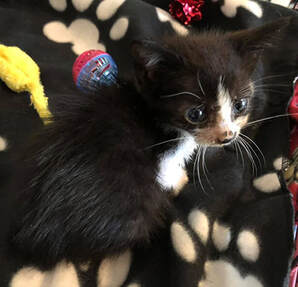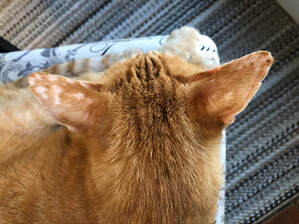
With the arrival of spring comes the birth of millions of newborn kittens, the majority of them born to feral cats living outdoors. Fortunately, however, most of these kittens will make excellent family pets if they’re rescued and properly socialized at an early age.
Enter the compassionate, attentive and nurturing foster home. And yet, tragically, despite the most ideal conditions, a disproportionate number of these well-tended kittens will succumb to fading kitten syndrome. According to the most recent estimates, 15 to 27 percent of them will die before they’re nine weeks old, while mortality among litters of foster kittens can be as devastatingly high as 100 percent.
What, then, is fading kitten syndrome? And, more importantly, can it be treated?
Fading kitten syndrome describes and encompasses a number of problems and conditions that can cause young kittens to die. Most of those who die from this syndrome seem to sicken and die suddenly. With a few exceptions, such as trauma and hypothermia, however, the problem usually builds gradually and is extremely difficult to detect until a crisis develops. The key, therefore, to reducing such a high mortality rate in these kittens is the early detection of any subtle problems before a crisis develops.
Potential causes of fading kitten syndrome include:
Inadequate mothering by the kittens’ mother. Most foster kittens are particularly at risk if they were orphaned or abandoned by their mothers. Even kittens with mothers can be at risk if those mothers are young and inexperienced, stressed, malnourished, unable to produce enough milk, unwilling to allow their kittens to nurse or are, paradoxically, obese.
Bacterial infectious that result in sepsis. Viral infections like calcivirus, feline herpesvirus, feline AIDS (FIV), feline leukemia (FeLV) and panleukopenia. Parasitic infestations with coccidia, roundworms or other organisms. Many of these infections are linked to a complete collapse of the immune system, usually associated with a condition called thymus atrophy.
Hereditary defects ranging from heart irregularities to undeveloped immune systems. Hemolytic anemia, which occurs when a kitten’s blood type differs from her mother’s. When that kitten nurses during the first days of her life, she ingests antibodies that will attack her blood cells.
While the early signs of fading kitten syndrome are subtle, they’re usually detectable, and foster parents should be aware of them. Sick kittens may not be capable of righting themselves when turned on their backs. They may have a poor suckling reflex. Their eyes may not open at the usual age of five days to two weeks. They will often be smaller than their littermates and may not gain weight normally. Healthy kittens should gain from 7 to 10 grams a day. (Many experts recommend weighing kittens on a gram scale twice a day). Kittens not gaining weight at an appropriate rate must, therefore, receive extra attention with a special focus on feeding.
Fosters should be on the alert for constant noises such as whining or crying even after feeding, gradually worsening lethargy, weakness, labored breathing, vomiting, diarrhea and nasal or eye discharge. These symptoms constitute a crisis and require an immediate visit to the vet. Recovery is possible if the underlying cause can be quickly identified and treatment started in time. Supportive care usually includes fluids, dextrose to support blood sugar levels, antimicrobials, nutritional support, oxygen support and body temperature support.
If a kitten does survive this crucial period and grows stronger, long-term management in her foster home must focus on proper nutrition, scrupulously clean living conditions, preventative health care, and especially close monitoring of her food intake to ensure she gains weight. Sadly, though, the prognosis for most kittens in crisis is poor, with many of them dying even with treatment. And one kitten lost doesn’t augur well for that kitten’s remaining littermates.










 RSS Feed
RSS Feed